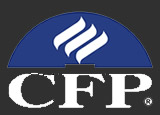September 16, 2019
It is better to practice lifeboat drills before the ship hits an iceberg then after. And icebergs in the economy are recessions. The difference being that ships rarely hit icebergs anymore, but the economic cycle does include recessions at a fairly regular clip.
The National Bureau of Economic Research (NBER) defines a recession as a significant decline in economic activity spread across the economy, lasting more than two quarters . . . normally visible in real gross domestic product, real income, employment, industrial production, and wholesale-retail sales.[1] NBER has a committee of Ph.D. economists who decide by looking through the data whether or not we experienced a recession. The actual recession call is a trailing indicator since the data must be in before the recession can be identified. The official call as to whether we experienced a recession comes after the event. The call is non-predictive since even a room full of Ph.D.’s cannot accurately tell the future.
I was born in the middle of the 1960 to 1961 recession and since then the US economy has had seven other recessions with the most recent starting in December of 2007 and ending in June of 2009. Recessions are simply proof of human fallibility (as if we really needed more evidence of that.) In economics, they are natural and in the end, recessions are not altogether disastrous. Without the cleaning and clearing out of poor business decisions we would waste a lot of money doing silly things. Capital flows to the companies and innovators that need it and can smartly use it. Capital wasted on ridiculous ideas is well, wasted.
A hierarchy of competence naturally and organically forms rewarding those businesses whose ideas, products, and services are deemed valuable by consumers. During a recession, money gets harder to come by and businesses and consumers reduce expenses that are frivolous and unnecessary. Those companies that are in the business of frivolity often go out of business thus reducing the drag on the available capital. Inevitably, the unused capital flows towards companies that can put it to more productive use.
So, since 1960 we have had eight recessions. That is about one every 10 years. What we are experiencing today and causing all the hand wringing and worrying is something called Recency Bias. Meaning, we remember the 2008 recession because it was the most recent and because it was so severe. Most of us don’t remember the 1960 to 61 recession since it was so so long ago—and it was relatively mild.
In the end, the last recession didn’t hurt investors who did not panic. In December 2007 the S&P 500 stood at 1,479.22 before it made its deep dive. It returned to the surface on January 1, 2013, when it hit 1,480.40.[2] If we did nothing, we reinvested our dividends (about 2%) at some very cheap prices. If we had the courage to buy we bought at some very cheap prices. Sadly, if we sold equities, we did so at some very cheap prices. Today the S&P 500 stands proudly at 2,999.69.
Our lifeboat drill is just about over. What I have driveled on about for this month’s newsletter is that the next recession will surely come. (Remember, humans are fallible.) It will not feel good and it will be painful for many people and their jobs. But as investors, to think that the next recession will create a permanent loss of value we would have to believe that whatever circumstance or event is blamed for the drop is different from anything that has ever happened in economic history. And my friends, it is never different this time. History doesn’t repeat itself but it often rhymes. (Mark Twain. . . maybe)
And I would venture to say that more money is made investing during a recession and trough than in a boom or peak. Our mantra for the investor? “I will not panic…I will not panic.”
Thanks so much for reading, Marty
[2] https://www.multpl.com/s-p-500-historical-prices/table/by-month


